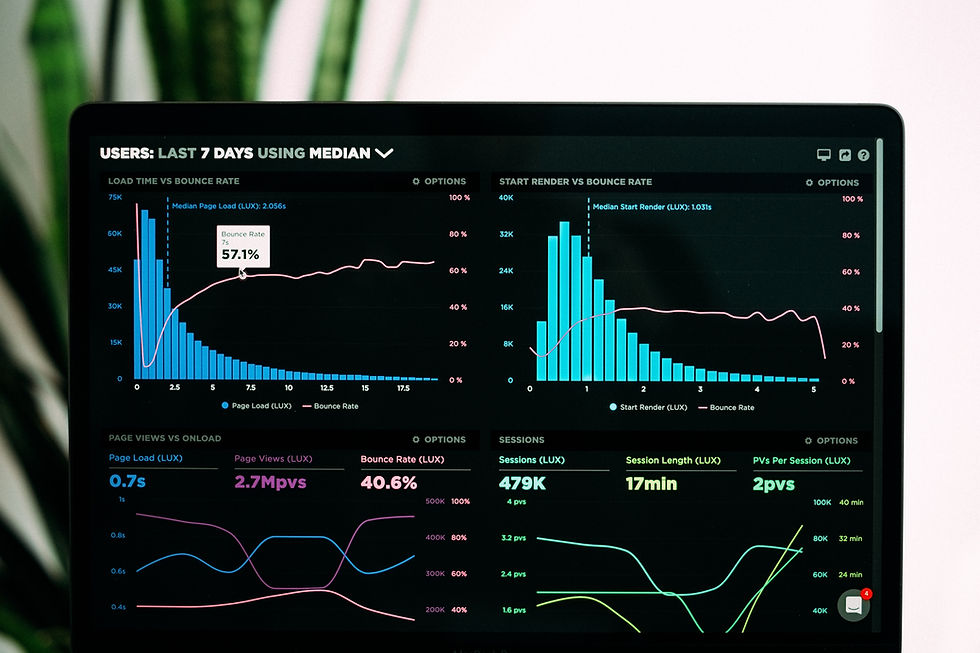What are AEO and GEO? What Your Brand Needs to Know
- Nicole Yao
- 4 days ago
- 4 min read
In the fast-paced world of search marketing, keeping up with advancements is crucial for brands eager to maintain their visibility and relevance. With the rapid growth of artificial intelligence (AI), two essential concepts have emerged: Answer Engine Optimisation (AEO) and Generative Engine Optimisation (GEO). Brands must adapt their strategies to effectively engage their target audiences as AI continues to reshape how we use search engines and generative platforms.
This blog post will dive into AEO and GEO, their implications for brands, and how AI is transforming the search landscape.
Understanding AEO and GEO
AEO, or Answer Engine Optimisation, is all about tailoring your content so it can be featured in AI-generated answers on search engines like Google and Bing. It's essential to ensure that your content is both well-structured and highly relevant to user queries.
For instance, if a user searches for "best coffee shops in New York," optimizing your content for AEO might include a detailed article listing top-rated coffee shops, their locations, and specialty drinks, utilizing concise and informative headers.
Conversely, GEO, or Generative Engine Optimisation, focuses on enhancing brand visibility across various AI platforms, including generative tools like ChatGPT on standalone creative platforms. GEO ensures your content meets the criteria for appearing in AI-generated outputs, which may involve different formats and styles than traditional content.
The distinction between AEO and GEO may sometimes appear blurred. A relevant example is Google’s AI Mode, which combines elements of search with generative features. In this new reality, brands must consider both AEO and GEO to adapt effectively.
The Role of AI in Search Marketing
In the last 18 months, the landscape of search marketing has shifted dramatically due to AI-powered tools. Innovations like Google’s AI Overviews and Gemini have changed how brands approach visibility in search results. As AI becomes more integrated into search engines, brands must rethink their strategies accordingly.
AI tools are now more than just answer providers; they help understand user intent and context. For example, a 2023 survey revealed that about 75% of consumers prefer personalized recommendations based on their previous interactions with AI interfaces. This shift calls for brands to create content that is informative, engaging, and directly addresses user needs.
The Emergence of Generative Engine Marketing (GEM)
A new concept has emerged at Jellyfish: Generative Engine Marketing (GEM). This framework encompasses both AEO and GEO, focusing on how brands can influence their presence across all AI-generated outputs. GEM underscores the importance of not merely existing in search results but also shaping how Large Language Models (LLMs) perceive and articulate a brand.
For example, consider a renowned brand like Louis Vuitton. Their strategy in generative environments shows that it's not just about being visible; it’s about reinforcing the idea of luxury through cohesive content across various media, including copy, visuals, and tone in videos. This holistic approach ensures that every touchpoint consistently conveys the brand's identity.
Strategies for Effective AEO and GEO
To successfully implement AEO and GEO strategies, brands should consider these approaches:
Content Quality and Relevance: Create high-quality, informative content that resonates with your target audience. Research indicates that rich content can increase engagement rates by 50%.
Structured Data: Use structured data markup to provide search engines with essential information about your content. Companies implementing this have seen a 30% increase in their visibility in search results.
User Intent: Develop content focused on user intent. For example, if a user types "how to choose a running shoe," create a thorough guide that addresses different needs based on experience levels, foot type, and terrain.
Consistency Across Platforms: Maintain a unified brand voice and messaging across all channels, from traditional search engines to generative AIs. Consistency helps build brand trust.
Monitoring and Adaptation: Regularly assess your content's performance in AI-generated outputs. Brands that adapt quickly to shifts in audience preferences and platform algorithms often experience a 40% growth in engagement.
The Future of Search Marketing
As AI technology evolves, both AEO and GEO strategies will shape the future of search marketing. Brands that embrace these shifts and adjust their content strategies will be better prepared for success in this new landscape.
The rise of AI-driven tools makes it essential for brands to rethink their visibility approaches. By actively focusing on AEO and GEO, brands can ensure they are not just present in search results but can also connect meaningfully with their audience.
Navigating the New Era of Search Marketing
AEO and GEO mark an exciting development in search marketing, driven by the transformative power of AI. Brands that grasp these concepts and employ effective strategies will keep their visibility and relevance in a rapidly changing environment.
While the core principles of marketing remain stable, the methods of engagement continue to evolve. By embracing AEO and GEO, companies can carve out a successful path in an increasingly AI-driven world, ensuring they connect with their audiences in profound and lasting ways.




Comments